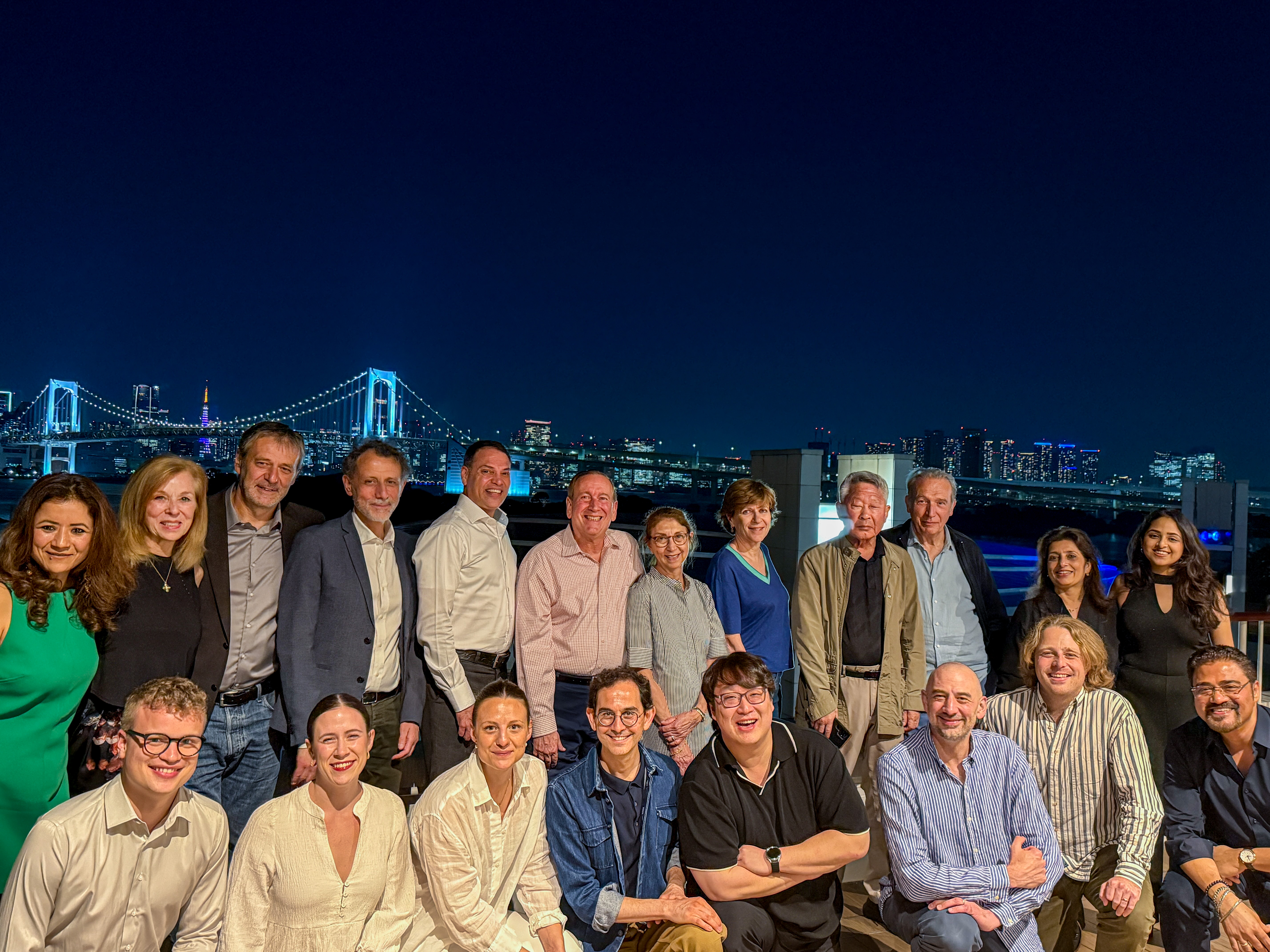
Interview: Michael Pfeffer
I’m from New Jersey, near New York City. I moved to New York for college, and studied at the School of Visual Arts. Starting in the design, print, and production industry, I worked in New York City for over six years.

Hometown
Hamilton, New Jersey
Job title
Senior Graphic Designer
What words do you overuse at work
Sure, no problem.
Recommended industry reading
Making and Breaking the Grid: A Graphic Design Layout Workshop, by Timothy Samara
Favorite hangout in Tokyo/Japan
Roppongi Hills—for its restaurants, art, movies, and seasonal events.
Can you tell us something about your background?
I’m from New Jersey, near New York City. I moved to New York for college, and studied at the School of Visual Arts.
Starting in the design, print, and production industry, I worked in New York City for over six years.
So I have a background in print, and that includes creating large format banners and posters for trade shows. I also have expertise in bookbinding.
In 2012, I moved to Japan and have been here since.
What inspired you to become a designer?
When I was in high school, I became interested in programming so I did an internship in an architectural firm in Princeton, New Jersey. While there, I worked in computing and programming, especially website creation.
As I got more into websites, I realized I was more of a designer than a programmer. That’s when I started taking classes in graphic design, advertising, art, and photography.
I studied computer graphics and advertising—before completing a four-year graphic design degree in New York.
What is good design?
That is a broad question. It depends on who you are designing for, the format you want to use, and what you intend to achieve.
If a design says what you want it to say, and gets the intended idea across to the viewer, then I suppose it is a good design.
There are many design platforms to consider—from large format and books to posters and websites. It depends on the industry, too.
Another way to think of good design is to think about the difference between art and design. Art does not need to have a purpose; design does.
Unlike art, design may need to promote or sell a product or have a clear commercial function. If a design fulfills its function or target it is a good design.
What are some of the most common design mistakes that you’ve encountered?
- Poor use of stock photography and clip art
Non-designers often make the mistake of confusing design with decoration. It is worth your time to consider the most appropriate graphics that reflect your message.
- Improper use of color
Keep to a limited color palette and have a reason behind the choice of each color.
- Using the wrong font or too many different fonts
It is a good rule of thumb to stick to legible fonts for body text. Fonts for titles should reflect the message, not only the designer’s personal preference. Some fonts are generally considered poor for any occasion. Comic Sans is one of these, so I’d advise against using it.
- Forgetting to consider hierarchy
What does the reader see first when viewing your design? This will depend on the size ratio of different elements. Also, copy in the top-left naturally tends to be seen first.
- Overcrowding
Don’t be afraid to leave white space on a page. Have reason behind each element that you place. Try temporarily taking away one element, and see if that improves the overall design.
Do you have any tips to ensure a successful design project?
One important thing is to ensure that all decision-makers in the company have a say in creating the design brief. This makes sure all expectations are included before the designing begins.
When this does not happen, it can lead to re-writes of the creative brief and delays in the project, which costs both time and money for all involved.
The following is also worth considering:
- Understand your company and its service or product: Knowing the brand image helps to set a direction for design.
- Value the creative brief: A creative brief that is planned well should help the design project move smoothly.
- Receive early input from decision-makers: This is important to avoid a redesign at a later stage.
- Communicate expectations: The client and designer should come to a common understanding of what the design hopes to achieve.
- Set deadlines and objectives: Setting clear goals and realistic deadlines from the start will help to keep the design project on track.
What has been your favorite design project so far at Custom Media?
There have been quite a few. I’ve enjoyed doing the redesign of The Journal, and also designing covers for BCCJ ACUMEN.
I particularly enjoyed creating BCCJ ACUMEN’s cover for the December issue, which was about the 2015 BCCJ British Business Awards. When you compare this with previous covers, it is clear that we are making progress.
I’ve also enjoyed designing a brochure for a large property developer in Tokyo—we received clear feedback from the client, and that was a great help. And the client had a really good sense of what they wanted, and we could meet their high demands.
I also enjoyed creating from scratch a branding campaign for another property developer. From their corporate colors to their banners and posters, we were able to shape their brand—and we did it at short notice.
Where do you get your design inspiration?
I love the work done by Japan Graphic Designers Association Inc. (JAGDA). They have an annual design award for top designers and design companies in Japan.
JAGDA has everything from products to video, and permanent exhibitions. It’s a cool place to meet fellow designers, too.
I also rely on a lot of online resources for inspiration. For cover designs, for example, I may search www.coverjunkie.com. It helps me to understand what makes an effective cover design and to see what is trending.
What design projects are you looking forward to in 2016?
We have a wide portfolio of international clients. But in 2016, I’m looking forward to working with more Japanese clients, too.


